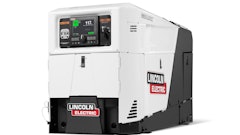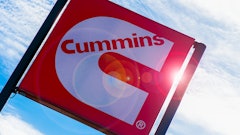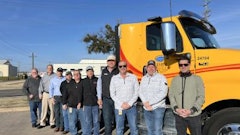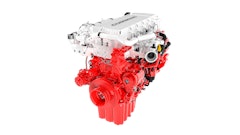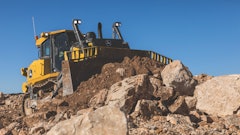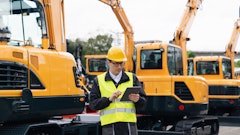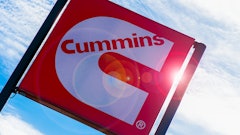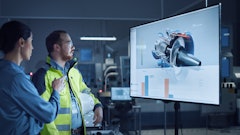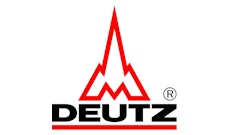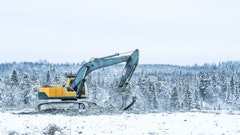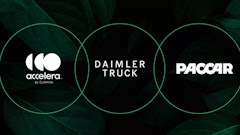The European Commission identifies a “pressing need” for action to improve air quality. In its recent proposal for an EU Environment Action Programme to 2020 the Commission announces measures to reduce air pollution at source. Combustion engines installed in non-road mobile machinery (NRMM) are considered among sources of air pollution and therefore a revision of the Directive 97/68/EC on emissions from NRMM engines is now on the Brussels agenda.
CECE, the Committee for European Construction Equipment, is closely following this revision, as Directive 97/68/EC is of core importance to the sector. In fact, despite the limits set by Directive 97/68/EC, the European Commission believes that the NRMM sector has become an increasingly important source of air pollution, in particular for NOx and particulate matter. Directive 97/68/EC regulates emission from major air pollutants – NOx, HC, PM and CO from diesel and petrol engines installed in NRMM machinery. Since its adoption in 1997 the Directive has been amended several times and technical changes were made.
However, the European Commission still sees “significant potential for reducing emissions” of the NRMM sector and considers that the directive does not give adequate protection from particulate matter. The Commission’s proposal for a revised Directive 97/68/EC is expected by the end of 2013. Recently, it has been seeking stakeholders’ views through a public consultation which closed few days ago. CECE is actively contributing to the revision process.
“Right balance must be struck”
The regulatory environment for Construction Equipment has grown into a highly advanced and complex structure, including – inter alia –machine-specific legislation to drive the industry towards improving its environmental performance. “While the European industry is fully committed to continue to invest in advanced technology to ensure sustainable growth and ensure compliance with new regulation, the right balance must be struck,” says Ralf Wezel, Secretary General of CECE. “The current revision of Directive 97/68/EC is a splendid occasion for the Commission and the other EU institutions to work towards a proportionate and effective legislation which is aligned with the rest of the world, in order to avoid the European industry falling into a structural disadvantage at the global level.”
Alignment with the US is crucial
In its contribution CECE agrees with the European Commission to extend the scope of the directive to engines below 19 kW and with power greater than 560 kW provided that the limit values are aligned with the corresponding U.S. legislation. For the new power classes the alignment with the U.S. provides the advantage of harmonization with an important external market and thus reducing trade barriers and allowing manufacturers to use economies of scale.
CECE in favour to improve air quality
The introduction of a Stage V for engines installed in NRMM is among the most debated issues of the planned revision. The Commission argues that current measurement techniques solely based on particulate mass no longer appear to be appropriate, referring to the WHO decision to classify diesel exhaust as carcinogenic to humans in June 2012. The Commission would like to replace existing measurement techniques by particulate number (PN) measurement and suggests providing new PN limits aligned to the Euro VI heavy-duty emission limits. CECE is in favor of measures to improve air quality that are cost effective to all sectors of society and provide benefits to public health. It should, however, not be forgotten that low emission levels have already been achieved by the introduction of Stage IV. CECE fully agrees with the Commission that a sound cost/benefit analysis should be made for Stage V and strongly recommends evaluating the installation feasibility in the study: aftertreatment equipment that need to be integrated into construction equipment pose a challenge due to limited space in the machines.
Industry needs minimum of five years stability between stages
In case the study demonstrates that Stage V is feasible and cost-effective to all sectors of society, CECE would support the proposed focus on a particulate number limit for variable speed engines in the power range 56 to 560 kW. The particulate number limit should be set at an appropriate level for non-road engines tested on non-road test cycles, and no change should be made to Stage IV gaseous and PM mass emission limits. CECE underlines the industry’s need for a minimum of five years stability between consecutive stages.
Flexibility scheme is important to manage product redesign
The transition to new emission limits often requires manufacturers of construction equipment to redesign machines. The current Directive already foresees exemptions, derogations and transitional measures in order to take into account these challenges. The European Commission proposes to maintain the current transition system but to introduce some changes to avoid significant stockpiling of engines. CECE supports the Commission’s proposal: the flexibility scheme is important for manufacturers of construction machinery to manage product redesign and the relevant necessary investments. Complex challenges with regard to functionality, visibility and safety need to be solved. In fact, it has to be kept in mind that there is a huge variety of specific models per manufacturer – up to 200, some of which are sold in very small quantities per year – which would need to be redesigned to fulfill new stages.













